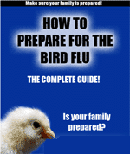Asthma and Exercise
So you have asthma? Think you can't exercise safely? Read on, my friend, and discover how you *can* do so safely and how your body will benefit from the exertion!
Asthma is a chronic lung disease that is marked by the following characteristics that are present during episodes of airflow obstruction:
Coughing
Wheezing
Shortness of breath
Chest tightness
It tends to occur in people who are genetically or environmentally presdisposed to the condition. Some of the triggers that might start or make an attack worse include:
Exposure to allergens (animal dander, pollen, mold)
Viral respiratory infections
Airway irritants (tobacco smoke, environmental pollutants)
Exercise
Exposure to things such as dust mites or cockroaches, especially in childhood
Medical treatments for asthma include:
Anti-inflammatory agents (inhaled and pill-formed steroids)
Broncodilators
If the patient can manage his/her symptoms, it's possible to avoid any critical or emergency breathing treatments, however, for people in a higher-pollutant area, this might prove to be a difficult task.
How can you prevent an asthma attack?
Bathe pets weekly
Do not smoke or permit smoking in your home
Stay inside with air conditioning when mold or pollen counts are high...
Wash your bedding & stuffed toys once per week in hot water
Wash your hands often
Get a flu shot
Wear a scarf over your mouth and nose in the winter
Be proactive about knowing your "triggers" and avoiding them
Now, with this information in place where does exercise fit in to your asthmatic life? According to Dr. Jack Becker, chief of allergy and asthma at St. Christopher's in Philadelphia, you shouldn't give up on sports or exercise at all. You just have to be smart about how you play, and take special precautions to avoid a flare-up.
Nearly all doctors agree that the best way to prevent an attack during exertion (exercise) is to keep the medication (inhaler) close at hand. You shouldn't use the inhaler more than 3 times during a game or exercise session—at that point, it's best just to back off and rest a while. Additionally, if you are up the previous night with coughing and wheezing, it's probably best to go lightly on the exercise the next day.
For something such as Exercise Induced Asthma (EIA), symptoms are slightly different, in that they will appear after about 6-8 minutes of exertion, and are often worse in cold, dry air.
For those with EIA, certain activities are preferred over others:
Swimming: this sport has a warm, humid atmosphere, year-round availability, and upper-body toning.
Walking
Leisure biking
Free downhill skiing (wearing a scarf or surgical mask to help warm the air while inhaling)
Team sports that require a short burst of energy are better than those that require more continual activity. Thus, baseball, football, golfing, gymnastics, surfing, or wrestling are preferred over soccer, basketball, field hockey, or long-distance running.
Remember, this condition is not "all in your head," it is a real, physiological medical condition that requires appropriate treatment. While your doctor can be your biggest ally in treating your asthma, YOU are the one who can most effectively prevent your symptoms. Be smart, take your medication, and be proactive. And don't let asthma sideline your physical activity—it does a body good!
To Recieve The Latest Information on Asthma and Allergies, enter your details in the form below:
About The Author:
This article provided courtsy of http://www.stop-smoking-solutions.com
Copyright Jeff Slokum - http://www.stop-smoking-solutions.com
Written by: Jeff Slokum
| 